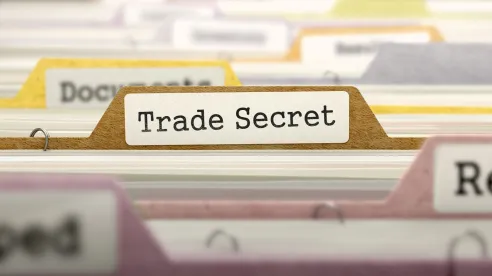When employees leave a company—whether it is due to a voluntary or involuntary separation—their former employers may worry about the security of the company’s confidential information and trade secrets. This article answers employers’ frequently asked questions about the intricacies that arise when an employee with valuable information leaves the company.
What can employers do at the start of the employment relationship to protect their trade secrets and confidential information after an employee leaves employment?
Many employers already maintain confidentiality agreements and train their workforces concerning trade secrets. But they can also get ahead of the game by periodically auditing their trade secrets. This involves clearly identifying and classifying company trade secrets, including the value of the trade secrets and the consequences of disclosure; reviewing what steps are being taken to maintain confidentiality and whether those steps are effective; and planning ahead for potential breaches of confidentiality. These efforts can be interdepartmental, including business units as well as human resources, information technology, and communications departments.
What can employers do after an employee gives notice but before his or her last day?
Employers may want to protect their confidential information by making sure they regularly execute a “standard” set of practices upon employee departure, including monitoring email traffic and computer access for unusual activity, conducting exit interviews and/or inventory checks, obtaining a return of property certificate, issuing reminders of confidentiality obligations, and preparing to discontinue access to computer assets and accounts as soon as the employee departs. Employers may also want to explore whether employees possess company data on noncompany digital spaces such as cloud-based storage, external email servers, social media, and external equipment (e.g., flash drives).
What approach can an employer take if an employee leaves voluntarily, and how does this differ from an employer’s actions if an employee leaves involuntarily?
Employees who leave voluntarily are likely to remain in the workplace for a period of time before their departure, which allows employers to follow their “standard” set of practices during this time. But, employers may want to plan ahead when involuntarily discharging an employee so that access to the employee is limited as soon as the termination takes effect. That could mean taking inventory to the extent possible without the employee’s participation (the company can plan what to ask the employee to return at the time of discharge), being prepared to terminate access to computer assets and accounts as soon as the employee is notified of his or her discharge, and being prepared to issue a reminder of the employee’s confidentiality obligations.
What can an employer do if an employee “ghosts” (leaves the company without telling anyone)?
Employers can act diligently when job abandonment is suspected by terminating access to computer assets and accounts, reviewing recent access and traffic for unusual activity, issuing reminders of confidentiality obligations, and demanding a return of all property. If malicious conduct is suspected, employers may want to preserve all evidence and avoid, for example, repurposing computers until that evidence is preserved.
What can an employer do in an exit interview to preserve confidentiality?
An exit interview sometimes covers topics such as an employee’s experience at the company and/or the reasons for the employee’s departure. But exit interviews can also consist of a detailed debriefing of the employee’s access to and return of all confidential information, including where the employee worked and on what projects he or she worked, and the equipment he or she used, including his or her own devices (also known as “BYOD”) and/or other noncompany digital spaces such as cloud-based storage, external email servers, social media, and external equipment (e.g., flash drives).
Do you have any tips for handling remote employee departures?
As part of an employer’s “standard” set of practices, which likely includes exit interviews and reminders of confidentiality obligations, it can maintain an accurate and up-to-date inventory of what has been provided to the remote employee since hire. Employers may also want to provide the employee with a convenient method of returning equipment and data, obtain certification that all of that equipment and data have been returned, and require return by a specific date. Handling remote employee departures can also require follow-up.




 />i
/>i


